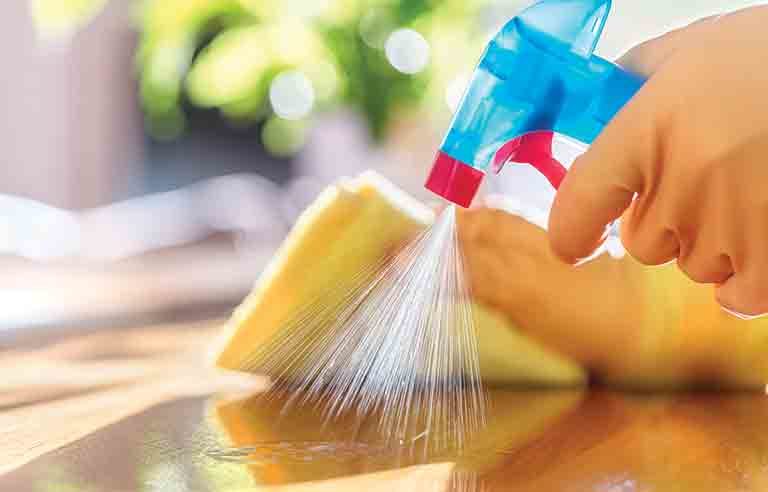Cleaning vs. disinfecting/sanitizing: What’s the difference?

A best practice to prevent the spread of COVID-19 and other viral respiratory infections is routinely cleaning and disinfecting/sanitizing surfaces, the Centers for Disease Control and Prevention says.
That’s because recent studies have found that SARS-CoV-2 – the coronavirus that causes COVID-19 – can remain viable for hours to days on surfaces made from a variety of materials. To effectively remove and eliminate the virus, however, workers need to understand that the terms “cleaning” and “disinfecting/sanitizing” aren’t interchangeable, NIOSH Director John Howard pointed out during a March 31 webinar hosted by the National Safety Council in conjunction with the agency.
“Cleaning is getting the dirt out,” Howard said. “Sanitizing is what’s used in public health a lot to get down to a certain level of bacteria – sometimes 95% is killed. Disinfection is killing everything. That’s where you want to aim.”
CDC’s explanation goes a step further:
Cleaning vs. disinfecting/sanitizing vs. sterilization
- Cleaning
- Cleaning refers to the removal of germs, dirt and impurities from surfaces. It doesn’t kill germs, but by removing them, it lowers their numbers and the risk of spreading infection.
- Disinfecting/sanitizing
- Disinfecting/sanitizing refers to using chemicals (e.g., Environmental Protection Agency-registered disinfectants) to kill germs on surfaces. This process doesn’t necessarily clean dirty surfaces or remove germs, but by killing germs on a surface after cleaning, it can further lower the risk of spreading infection.
- Sterilization
- Sterilization describes a process of destroying or eliminating all forms of microbial life and is carried out in health care facilities by physical or chemical methods.
Among CDC’s tips to clean and disinfect surfaces:
- Wear disposable gloves.
- Clean surfaces using soap and water, then use a disinfectant.
- When using EPA-registered disinfectants, follow the instructions on the label to ensure safe and effective use of the product.
- More frequent cleaning and disinfection may be required based on level of use.
- Surfaces and objects in public places (e.g., shopping carts and point-of-sale keypads) should be cleaned and disinfected before each use.
Post a comment to this article
Safety+Health welcomes comments that promote respectful dialogue. Please stay on topic. Comments that contain personal attacks, profanity or abusive language – or those aggressively promoting products or services – will be removed. We reserve the right to determine which comments violate our comment policy. (Anonymous comments are welcome; merely skip the “name” field in the comment box. An email address is required but will not be included with your comment.)
